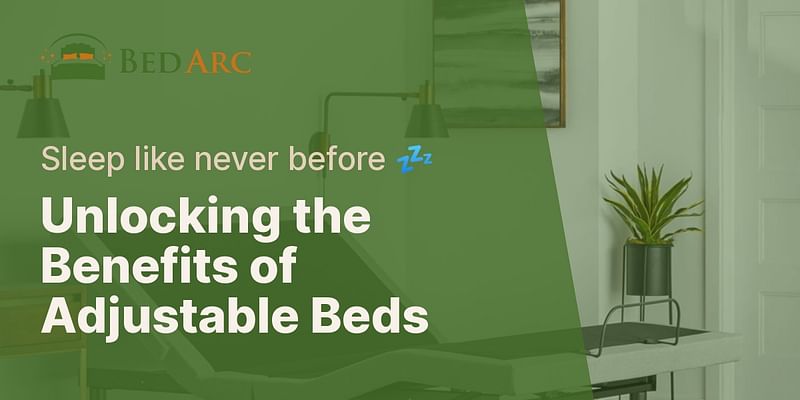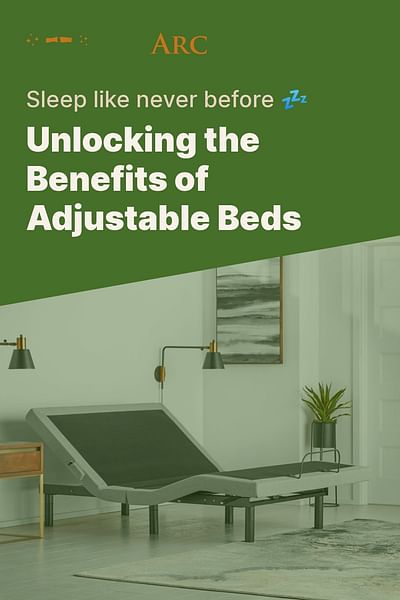Robert 'Bob' Smith is a retired engineer with a passion for problem-solving. He enjoys applying his technical skills to everyday household issues, like fixing a squeaky bed frame. Bob has been contributing to Bed Arc with his practical and easy-to-follow guides on bed frame maintenance and repair.
Dear reader,
Thank you for reaching out to us with your question about the pros and cons of an adjustable bed. Adjustable beds have gained popularity in recent years due to their ability to provide customizable comfort and support. In this response, I will outline the benefits and drawbacks of owning an adjustable bed, helping you make an informed decision.
Pros of an Adjustable Bed:
1. Improved Sleep Quality: One of the biggest advantages of an adjustable bed is the potential for improved sleep quality. By allowing you to adjust the position of your head and legs, an adjustable bed can help alleviate common sleep issues such as snoring, acid reflux, and sleep apnea.
2. Enhanced Comfort: Adjustable beds offer a range of positions, allowing you to find the most comfortable angle for reading, watching TV, or working on your laptop in bed. This versatility can help reduce discomfort and pressure points, promoting better relaxation and rest.
3. Pain Relief: If you suffer from chronic pain, an adjustable bed may provide relief. By elevating your legs or upper body, you can reduce pressure on your joints and alleviate pain associated with conditions like arthritis, back pain, and fibromyalgia.
4. Improved Circulation: Raising your legs above heart level can enhance blood circulation, reducing swelling and promoting overall cardiovascular health. This can be particularly beneficial for individuals with diabetes or those prone to leg swelling.
5. Customizable Support: Adjustable beds often come with different mattress firmness options, allowing you to choose the level of support that suits your individual needs. This customization can help address specific sleep preferences and alleviate discomfort.
Cons of an Adjustable Bed:
1. Cost: Adjustable beds tend to be more expensive than traditional bed frames. However, the investment may be worthwhile if you value the health benefits and improved sleep quality they offer.
2. Compatibility: Not all mattresses are compatible with adjustable bed frames. Make sure to check the manufacturer's guidelines or consult with a sales representative to ensure your current mattress or the one you plan to purchase is suitable for use with an adjustable bed.
3. Weight: Adjustable beds are generally heavier than standard bed frames due to the additional mechanisms and motors. This can make it more challenging to move or transport the bed if needed.
4. Power Outages: Since adjustable beds require electricity to operate, power outages can temporarily limit their functionality. However, many models come with battery backup systems to mitigate this issue.
5. Noise: Some adjustable beds may produce noise when adjusting the position. However, modern models are designed to minimize noise levels, ensuring a peaceful sleep environment.
In conclusion, adjustable beds offer numerous benefits such as improved sleep quality, enhanced comfort, pain relief, improved circulation, and customizable support. However, they come with a higher price tag, compatibility considerations, potential weight challenges, reliance on electricity, and the possibility of noise. Weighing these pros and cons will help you determine if an adjustable bed is the right choice for you.
If you have any further questions or need more information, please don't hesitate to reach out. We're here to help!
Best regards,
Robert 'Bob' Smith
Bed Arc Contributor















